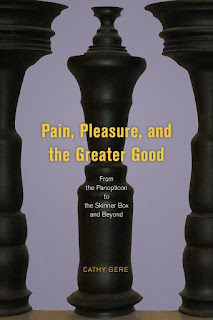 His first book is Occupational Hazards: Success and Failure in Military Occupation.
His first book is Occupational Hazards: Success and Failure in Military Occupation.Edelstein applied the “Page 99 Test” to his new book, Over the Horizon: Time, Uncertainty, and the Rise of Great Powers, and reported the following:
In the 1920’s, European great powers confronted what I call now-or-later dilemmas. For Britain, this meant deciding whether to attempt to constrain a revisionist Germany now or put off the costs of doing so until later. For Germany, it meant deciding whether to act more aggressively to reclaim its interests now or delay any revisionism until later. Unexpected levels of cooperation between Germany and Britain emerged out of the way in which each state chose to resolve their dilemmas. Britain was too focused on short-term economic challenges to address the potential long-term threat of Germany while German Foreign Minister Gustav Stresemann understood that early aggression would undermine long-term German goals.Learn more about Over the Horizon at the Cornell University Press website.
This historical detail is relayed on page 99 of Over the Horizon, and it encapsulates the more general argument made in the book. Temporal dynamics have been an underappreciated dimension of international politics. States respond differently to long-term threats and opportunities, and in particular, surprising levels of cooperation between existing and emerging great powers can be explained by the time horizons of political leaders.
One implication of the argument is that states have incentives to try to manipulate the time horizons of the leaders of other states. On page 99, I describe how Stresemann attempted to offer reassuring signals to other European leaders about the benign nature of German intentions. Whether or not those intentions were sincere and whether or not they would have persisted over the long term is less consequential, then that they contributed to an environment in which other European powers felt comfortable alleviating the pressure that that Treaty of Versailles had placed on Germany.
The argument has implications for how we think about contemporary rising great powers, including China. In the two decades after the end of the Cold War, Chinese grand strategy was motivated by the idea of laying low and avoiding provocations in order to allow China to continue to grow unimpeded. For a combination of domestic and international reasons, China has acted more assertively in the last few years. Patience was a virtue for China, and its emerging impatience may have dramatic consequences for the future of great power politics.
The Page 99 Test: Occupational Hazards.
--Marshal Zeringue





















